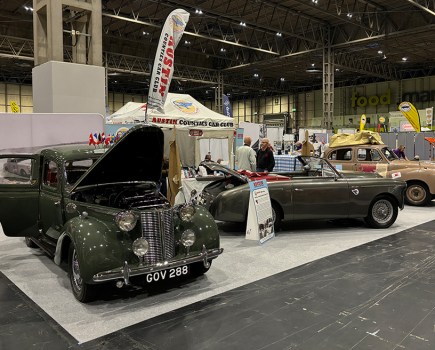Here is a statement of fact: A MkIII Ford Escort recently sold for £60,000. Okay, it has a turbo-charger and there is an RS on the badge in there somewhere, but £60,000? May I be so bold as to suggest that this is the point at which the ‘real classic’ price bubble bursts?
First of all let’s speculate why any car from the comparatively recent past is worth so much? You could be quite badge-ist or marque-ist here and say ‘well, no Ford should ever be worth a heck of a lot of money, after all they are not that special’. Well, yes; they have made plenty of porridge, but when it comes to sporting credibility Henry Ford has it in spades. From multiple Le Mans wins with the GT40, to the Cosworth DFV dominating Formula One for a generation and those rally BDA Escorts and touring car Cosworths, they have all disciplines covered.
So the Ford badge is not the problem here at all. They clearly have the credibility to justify a higher than average asking price providing we are shuffling up to bid or buy one of those unique models with a championship history. Those can be tens of thousands of pounds because there is verifiable history. Indeed a car – be it a Ford, Vauxhall, Datsun or whatever – can effectively be a piece of history. Okay, maybe it has been written off a few times, but those are the cars that people buy to put in museums and play with at Goodwood.
But what about the ones that didn’t see competition? How about the homologation ones, the very few hundred or extremely low thousands sold with a rear wing and sundry bolt-on bits hidden in the boot purely for the purposes of taking part in competition? Yep, rather like coach-built Aston Martins, Ferraris and Bentleys, a very limited run can make these cars interesting (that is to say iconic). As such, performance cars from mainstream manufacturers can certainly be worth quite a lot of money.
It isn’t all about rarity. There are lots of very rare cars that may have been built in large numbers, but rust, scrappage and indifference means that there might only be three Nova notchback 1.0 Trips on SORN, which in reality are worth five pence, tops. The big question is then, why on earth would anyone pay a lot of money for an admittedly interesting ‘Eighties performance car?
Let me introduce you to ‘Dwayne’, or maybe ‘Dwaynette’ as well? In the ‘Eighties Dwaynette could not afford to buy the turbo hot hatch she really wanted and had to make do with a Fiesta van. Meanwhile Dwayne was just eight years old, so couldn’t buy one, but certainly had a cut-out picture on his bedroom wall. Fast forward to right now and Dwaynette has a thriving employment agency in Brentwood, Essex. Dwayne has done just as well and his carpet warehouse in Dewsbury, Yorkshire is set for expansion. Both of them have cash to burn and effectively time travel, so good luck to them. I think them spending their money however unwisely on childhood or youthful dreams is entirely laudable and explains how we get inflated valuations for mass-produced performance motors.
Having explained how we got here, what can we do about it, if anything? Torque Monkeys readers don’t need to do a thing. The market will take care of itself by either exploding, imploding or continuing to expand. We should of course stand well back at that point. I believe that the recent nostalgia market that is funded by Dwayne and Dwaynette is governed ultimately by commonsense. They will realise that paying over the odds to get their youth back, or relive a dream, has a limit.
However, the so-called ‘real classics’, the fancy pants Ferraris and Astons will either stop where they are or keep on making stupidly large sums. That’s because ‘criminals may’ be involved. Don’t quote me on this, but some of the huge sums being spent come from the proceeds of ‘nefarious activity’. A classic car offers a rather clever way of laundering that money. The classic disappears into a dehumidified storage facility and then turning that motor back into legitimate liquid cash is easy enough.
Meanwhile our little hobby trundles along and we should learn to love the overlooked classics from our recent past. That’s because we have established that this price rise phenomenon is a generational thing. As older classic caristas sadly die off, who is going to covet and love pre-war Rileys and Wolseleys? Obviously we could do that. These can become the proper weekend cars that require a bit of effort to look after, but I believe we are all up to it. This is how it works, it is our duty to keep heritage on the road.
There are plenty of realistic classic owners who will never get sucked into the price spiral because they are too sensible to fall for it. Prices usually go up and looking back at stuff I wrote about buying fast Fords for a magazine with a very similar name back in the ‘Nineties, the prices do indeed pull you up short. They, or rather Cosworths, started at just over £5000 and now they are £40,000, with rather questionable Sapphires at £10,000. This whole issue came up when I was on a radio programme a few weeks back where I was asked to guess what cars were being advertised for £80,000 and £105,000. The radio presenter could not believe that just inserting the word Cosworth after Sierra could cause so much inflation.
To sum up then, forget about owning an overpriced sexy classic like a Ferrari or Aston. They are not for the likes of us. They never will be. ‘Eighties icons are far too much at the moment and I expect realism to happen, then we can enjoy them again. Old stuff, the ordinary pre ‘Fifties models, are going to fall. Even Dwaynette and Dwayne can join in. I think they may even enjoy owning and driving something so rare and special.







